A Lego Love Story – Priming Pupils
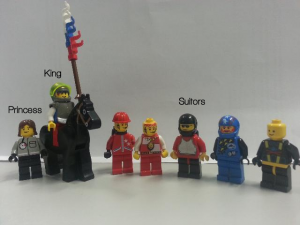
Once upon a time there was a king who lived in a castle on an island in the middle of a spectacular blue lake.
So starts a ‘true story’ I invented to mask the introduction of a new maths topic. See if you can guess the topic as I read on…
He had one beautiful daughter who many Princes from nearby kingdoms wanted to marry.
So he set them a challenge. He built 10 stepping stones from the edge of the lake to his castle and said, “The man who wins my daughter will be the man who can get to the castle in equal jumps across the stepping stones.”
[scribd id=116009811 key=key-1bikgz3ryv8van6jfjq0 mode=slideshow]
There was a high degree of anticipation before the lesson, partly because pupils had watched the movie version (see video inset) the night before and partly because I had been announcing all week that we would be studying a Lego love story today. [Something I learned from Rafe Esquith – tell them all the exciting things happening in your lessons that week so that they look forward to class. It builds positivity and buy-in.]
Despite them knowing the story, I got a pupil to sit in the teacher chair and read the story with their best primary school teacher voice (perch reading glasses on top of their head and give them a book to hold for effect).
Story time over, pupils work in pairs to list the ways the princes can get across 10 stepping stones in equal jumps. They have no problem with this at all but they have my crude drawing of the scene (downloadable in the Resources section below) and a Lego prince to aid their thinking. Crucially, I emphasise to them the importance of systematic thought and ask them to present their solution for the king in a clear and organised way.
After about 8 minutes on this, I display some of their work under the visualiser, commenting on their Smart Factor (how organised and methodical their approach has been).
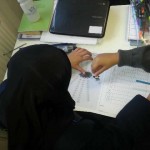
The wily old King, being a bit of an adventurer and not wanting to give his daughter away too easily, added a final part to the challenge.
He said to the Princes, “What if there were only 2 stepping stones, what jumps could you make then? And if there were 3…4…5…6…7…up to 12 stepping stones, what equal jumps would you make?
“The Prince who can tell me the answer to all these problems will win my daughter’s hand.”
The dialogue between pupils and the displays of their thinking impressed me. In the video on the right, you can hear that a couple of the pupils have picked up on the fact that this problem is best solved with an understanding of factors and prime numbers (did you guess?). Another pair created lists of ways that work and ways that don’t. And another pair constructed a large two-way table demonstrating a complete set of solutions and non-solutions.
Pupils without prior knowledge of factors did just as well at finding the solutions although their approach was marginally less systematic.
With pupils now fully primed for next week’s lessons on factors, we can look forward to Jeopardy, Taboo, Family Fortunes and the Simpsons’ classic mistakes.
Resources
Sheet for pupils to record workings
Sheet for pupils to record workings (pdf)
Story and prompts (ActivInspire)
Story and prompts (pdf)
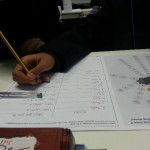
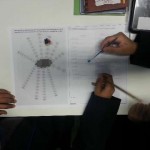
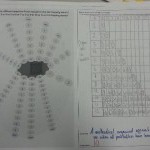
An inspired idea to teach what is often seen as a mundane yet fundamental number topic. This is an excellent example of how, with a little bit of thought, engaging ideas can make all the difference to our students.
Thank you so much for the resources and the story. More than anything, thanks for making me think again about how I plan to teach topics I thought I knew inside out.
Lego? Inspired! I love it and am in the middle of a Lego revival, I have bought a lot recently. Pleased that I am now thinking of how it can be used to teach.
Thanks Alex. A bunch of Lego men from ebay can be used in so many ways!
So looking forward to trying this. I am unable to open either resource document. Would you please let me know how I can get a copy? Thanks!
Hi Debbie,
I’ve added a couple of pdf links which you should be able to open. (The reason you couldn’t open the others is because you need ActivInspire and Publisher installed.)
Hope that helps,
Bruno
Hi Bruno,
This is a great activity to introduce factors and primes – I really like the creativity! Who doesn’t get excited by lego!?! Also like how you hooked them in a few days early.
Upon reading the post, I instantly thought of the ‘what if…?’ question that you asked them in the second part. It’s a nice activity to discuss that it is a mathematicians job to ask ‘what if?’ questions and is something that they should aspire to. Also, it would be interesting to ask them to predict how many factors say the numbers 25 and 40 have. Whilst (I think) there are ways of doing this, they probably will not be able to find a way. This would present the opportunity to discuss that it is also a mathematicians job to search for patterns, even if currently the mathematics is beyond their reach.
Thanks for sharing this Bruno – great stuff.
Thanks Dan. I always look forward to this lesson every year. The Lego is fun for me too! You’re right that this introduction does act as a good stepping stone 🙂 to factors and primes.
Pattern sniffing? Absolutely.